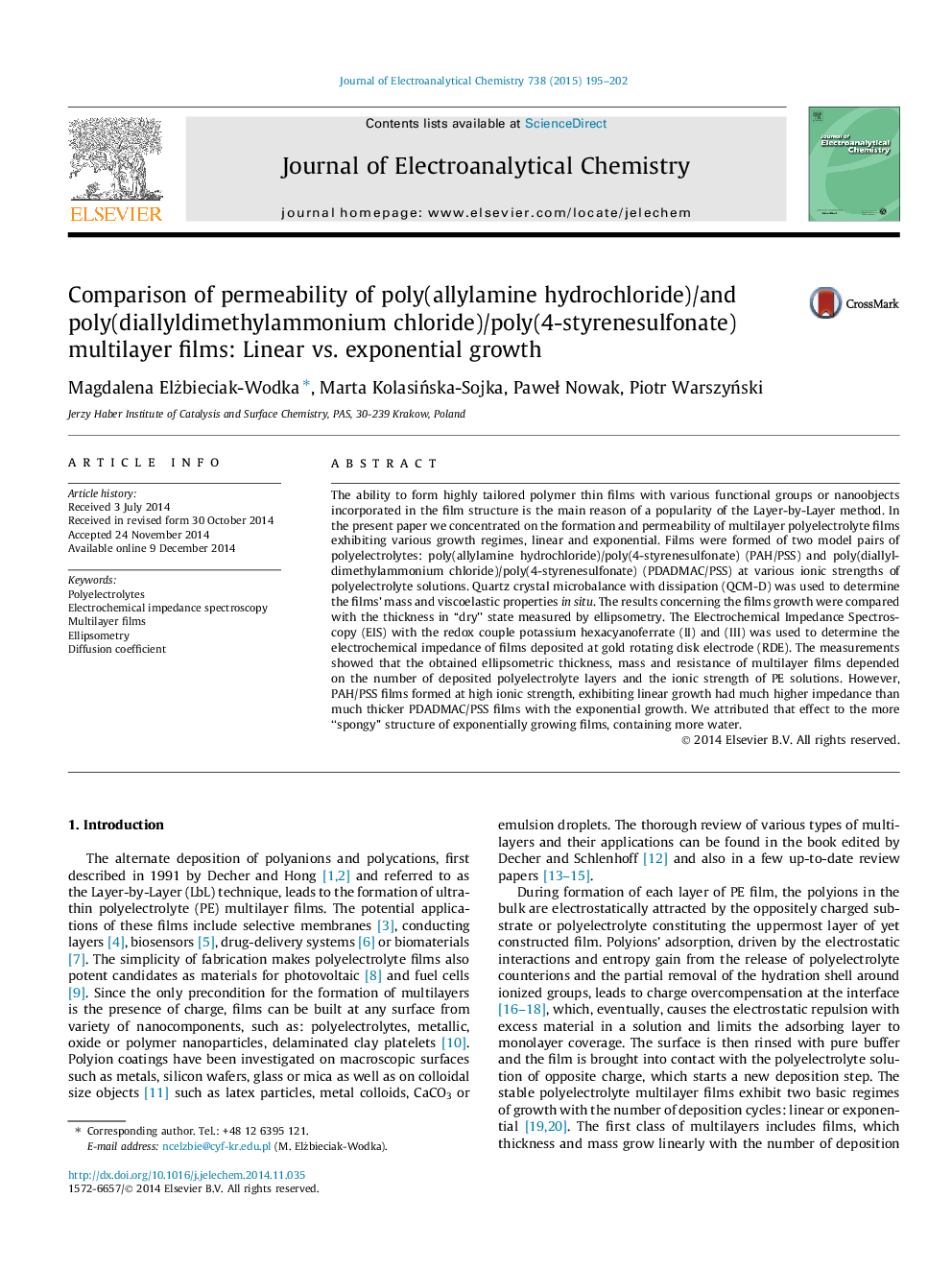| کد مقاله | کد نشریه | سال انتشار | مقاله انگلیسی | نسخه تمام متن |
|---|---|---|---|---|
| 218589 | 463207 | 2015 | 8 صفحه PDF | دانلود رایگان |

• Properties of multilayer films depend on the type of used polyelectrolytes.
• Permeability of polyelectrolyte multilayer films was probed by electrochemical impedance spectroscopy.
• With the increasing number of adsorbed polyelectrolyte layers, the permeability decreases.
• Films with the linear growth form a greater barrier for the electroactive compounds.
• The exponential film growth gives a thicker films, but having a small blocking properties.
The ability to form highly tailored polymer thin films with various functional groups or nanoobjects incorporated in the film structure is the main reason of a popularity of the Layer-by-Layer method. In the present paper we concentrated on the formation and permeability of multilayer polyelectrolyte films exhibiting various growth regimes, linear and exponential. Films were formed of two model pairs of polyelectrolytes: poly(allylamine hydrochloride)/poly(4-styrenesulfonate) (PAH/PSS) and poly(diallyldimethylammonium chloride)/poly(4-styrenesulfonate) (PDADMAC/PSS) at various ionic strengths of polyelectrolyte solutions. Quartz crystal microbalance with dissipation (QCM-D) was used to determine the films’ mass and viscoelastic properties in situ. The results concerning the films growth were compared with the thickness in “dry” state measured by ellipsometry. The Electrochemical Impedance Spectroscopy (EIS) with the redox couple potassium hexacyanoferrate (II) and (III) was used to determine the electrochemical impedance of films deposited at gold rotating disk electrode (RDE). The measurements showed that the obtained ellipsometric thickness, mass and resistance of multilayer films depended on the number of deposited polyelectrolyte layers and the ionic strength of PE solutions. However, PAH/PSS films formed at high ionic strength, exhibiting linear growth had much higher impedance than much thicker PDADMAC/PSS films with the exponential growth. We attributed that effect to the more “spongy” structure of exponentially growing films, containing more water.
Figure optionsDownload as PowerPoint slide
Journal: Journal of Electroanalytical Chemistry - Volume 738, 1 February 2015, Pages 195–202